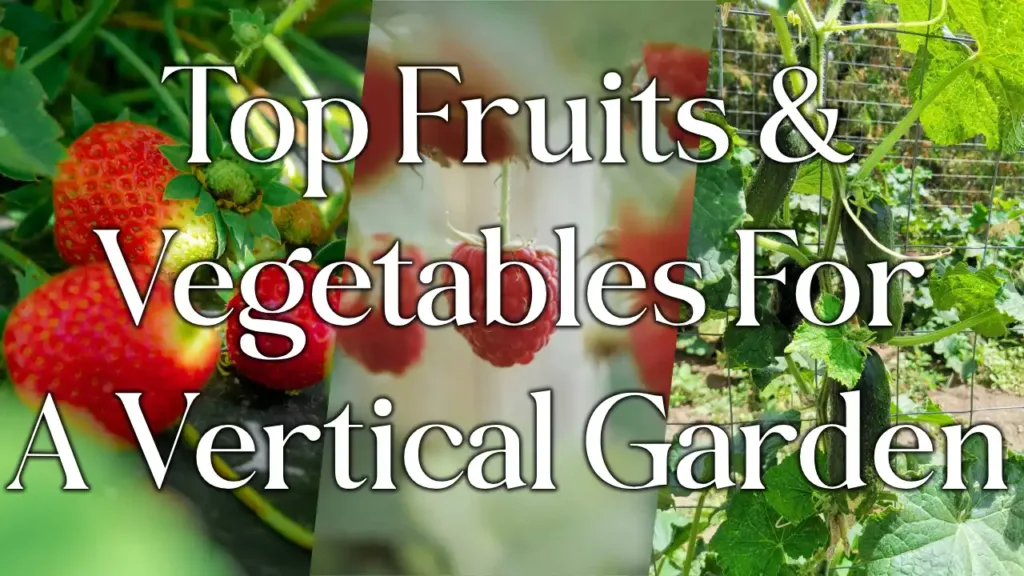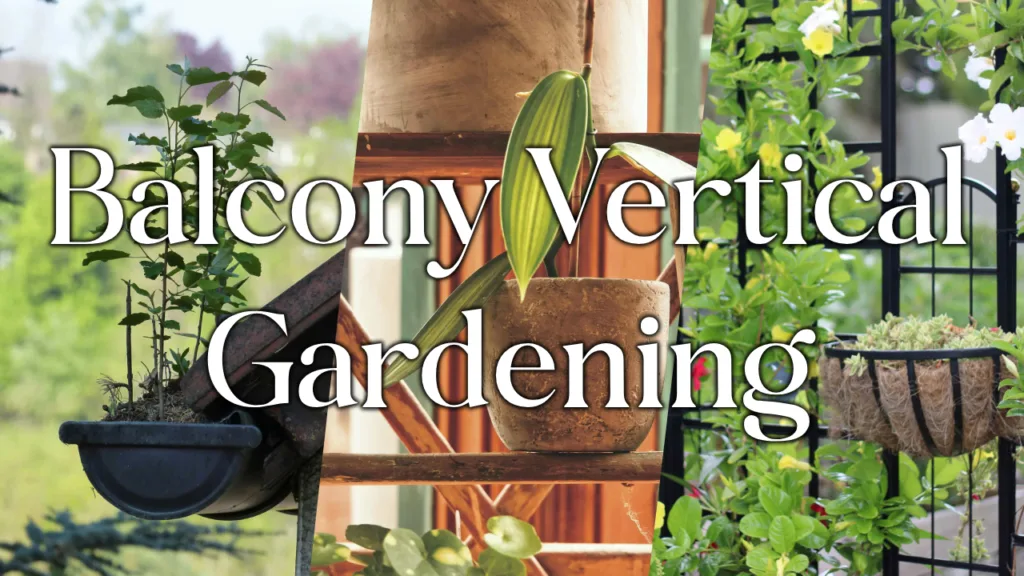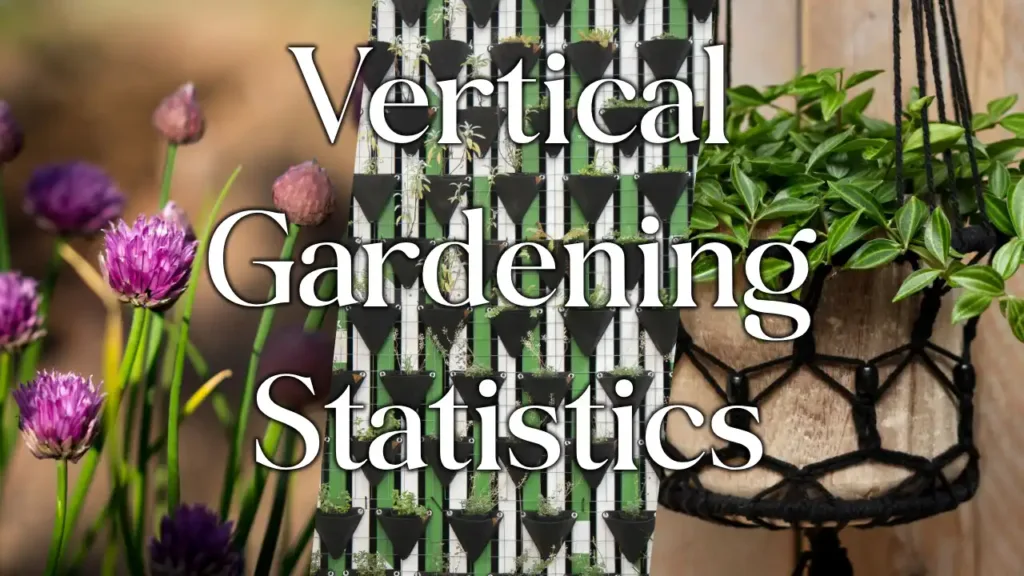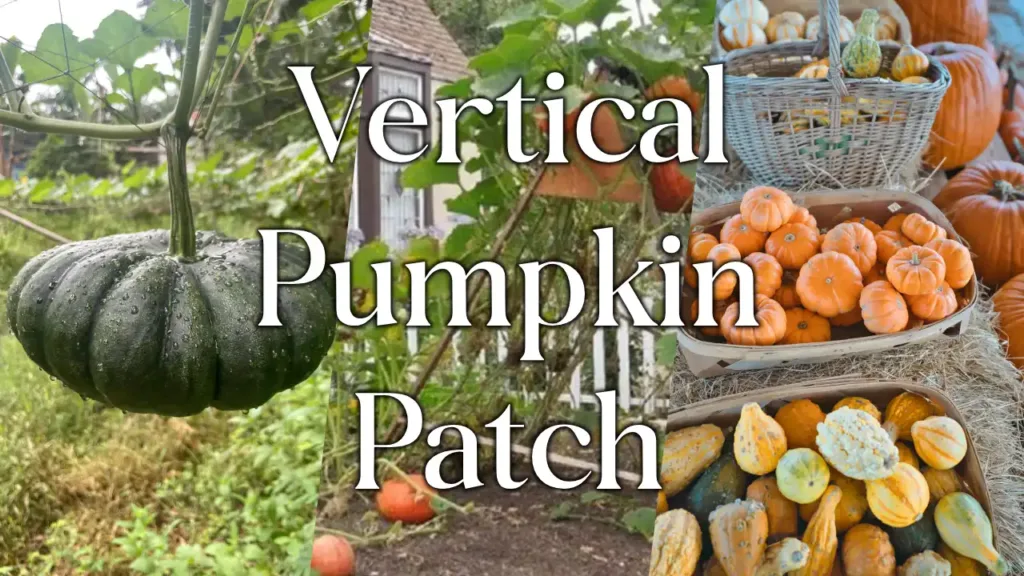If you’re looking to grow as much fruit in your garden as possible, then you need to consider making a vertical fruit garden. Whether you’ve got a small garden, a balcony or a spare sunny wall, vertical gardening will allow you to enjoy an abundant harvest of fruit and vegetables without needing much space.
In this article we’re going to show you our 12 favourite fruit and vegetables that you can grow in a vertical garden. If you’re inspired and want to learn how to create your own vertical garden, click here to see our complete guide.
Contents
1. Strawberries

I love growing strawberries in my garden. Not only are they a great treat but they’re also incredibly easy to grow in small spaces, making them ideal for vertical gardening. If you’re looking to get the most produce out of your space like me, then I’d recommend that you choose an everbearing variety, such as Everests, so that you get fruit throughout the summer.
To keep your strawberry plants healthy, I’d recommend planting them in a sunny spot on your vertical gardening setup and regularly feeding them with a high-potassium fertiliser to ensure a continuous supply of sweet, juicy strawberries.
2. Raspberries
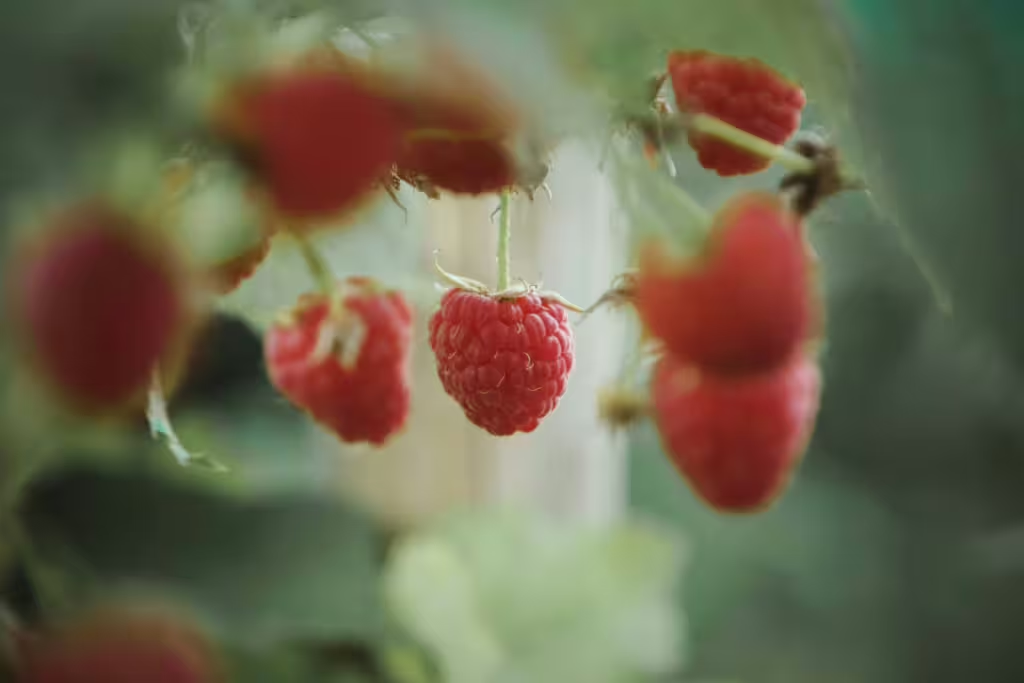
Raspberries are also a joy to grow vertically, offering a bountiful harvest and vibrant greenery to your garden. Growing them vertically also makes netting the plants to prevent birds eating the berries much easier.
To get the best results, I recommend training the raspberry canes up a trellis, tying them in as they grow to ensure they are well-supported. Pruning is key to maintaining healthy plants and encouraging a strong crop, so I’d encourage you to frequently check your vines to make sure there are no dead or unproductive canes.
3. Blackberries
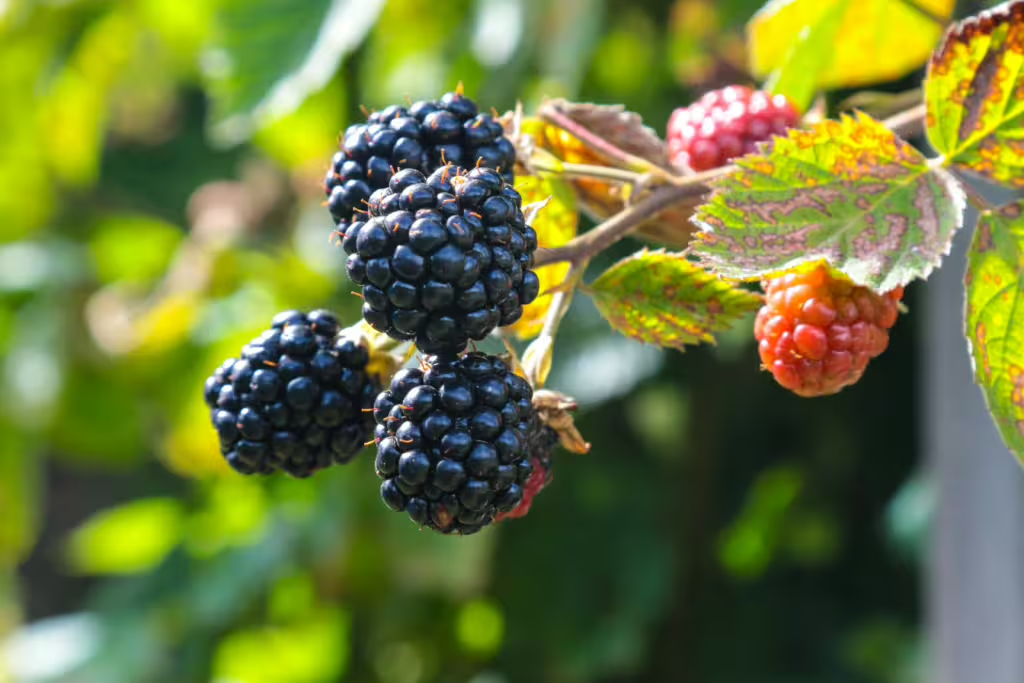
Blackberries are another beloved fruit in any vertical garden. Growing them vertically both conserves space and helps neaten what could be an unruly bramble.
If you’re looking to grow other types of berries in a small space, such as a balcony, check out our guide here.
4. Grapes
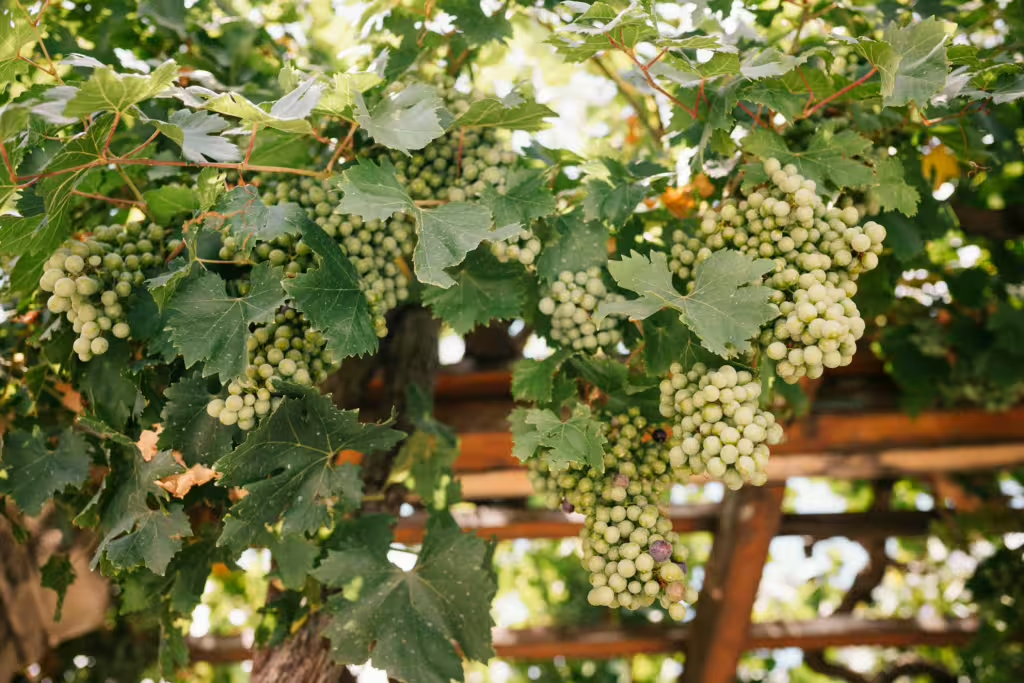
If you’re looking for a plant that looks and tastes great, then you should definitely consider growing a grape vine. Grape vines can grow up almost anything, meaning that you can plant them to the side of your vertical gardening setup, or even near a pergola or sunny wall, transforming the area into a productive vineyard.
To ensure that your grapes flourish, I’d recommend giving them a hard prune once per year to help the plant focus on growing new grapes, rather than supporting existing vines. I’d also make sure to mulch around the base of the plant to retain as much moisture and add organic matter in the soil, giving my vines the best possible start each season.
5. Tomatoes
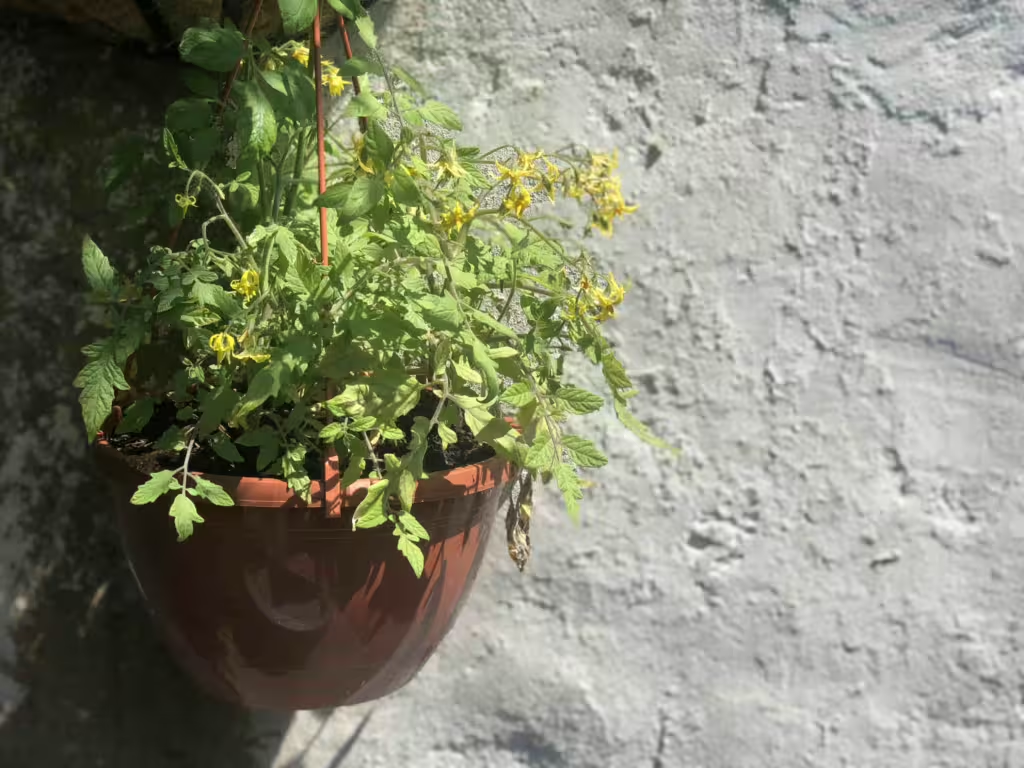
Tomatoes are one of my favourite plants to grow, partly because I’ve grown them every year since I started gardening, and also because they’re just so easy to grow, which makes them the perfect addition to your vertical garden. Whether you choose grow them in a hanging basket like I do, or plant them in a bigger container with a trellis, your tomatoes will thrive as long as they get enough sunlight and airflow.
6. Cucumbers
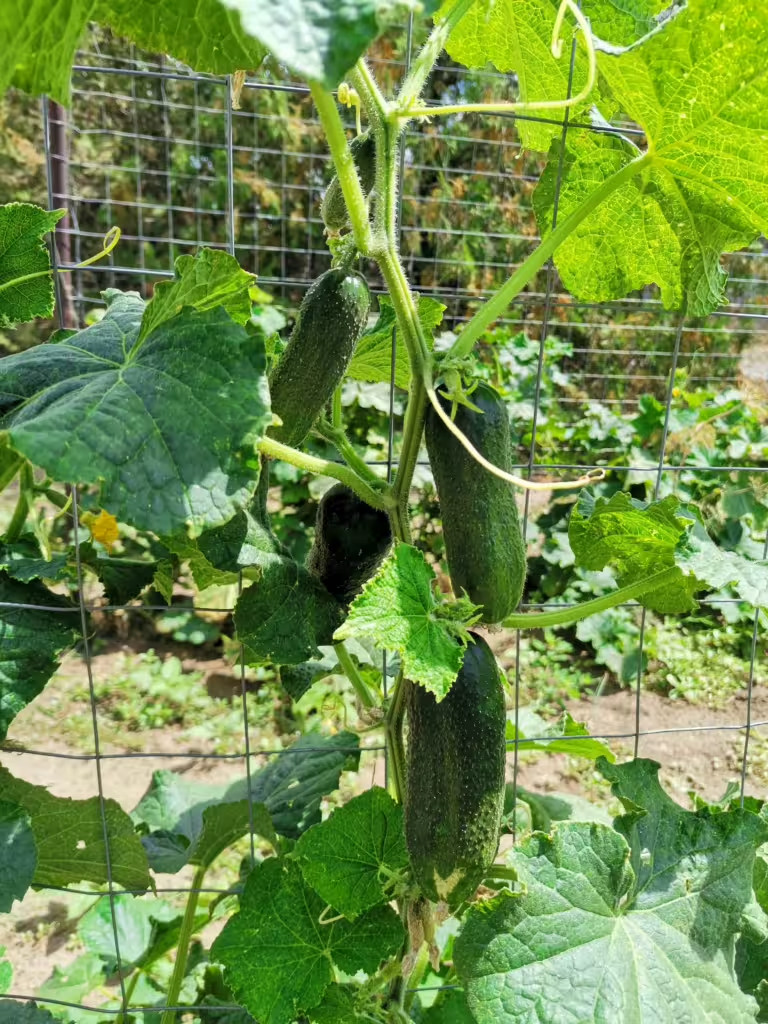
Cucumbers are another one of my favourite things to include in a vertical garden. Their climbing nature makes them perfect for growing on a-frame supports, meaning that no matter the space you have available, you’ll be able to create a successful vertical cucumber garden.
7. Melons
In my opinion, growing melons vertically is one of the most satisfying experiences you can have in your garden. I love how they can transform any small space into a tropical oasis, with their vines winding up their supports and their heavy, fragrant fruits hanging down.
If you do plan on growing melon’s vertically, I recommend installing strong trellises that can support the weight of the melons as they grow. Regular watering and feeding with a high-potassium fertiliser are also a must to encourage the plants to produce sweet, juicy melons.
8. Pumpkins
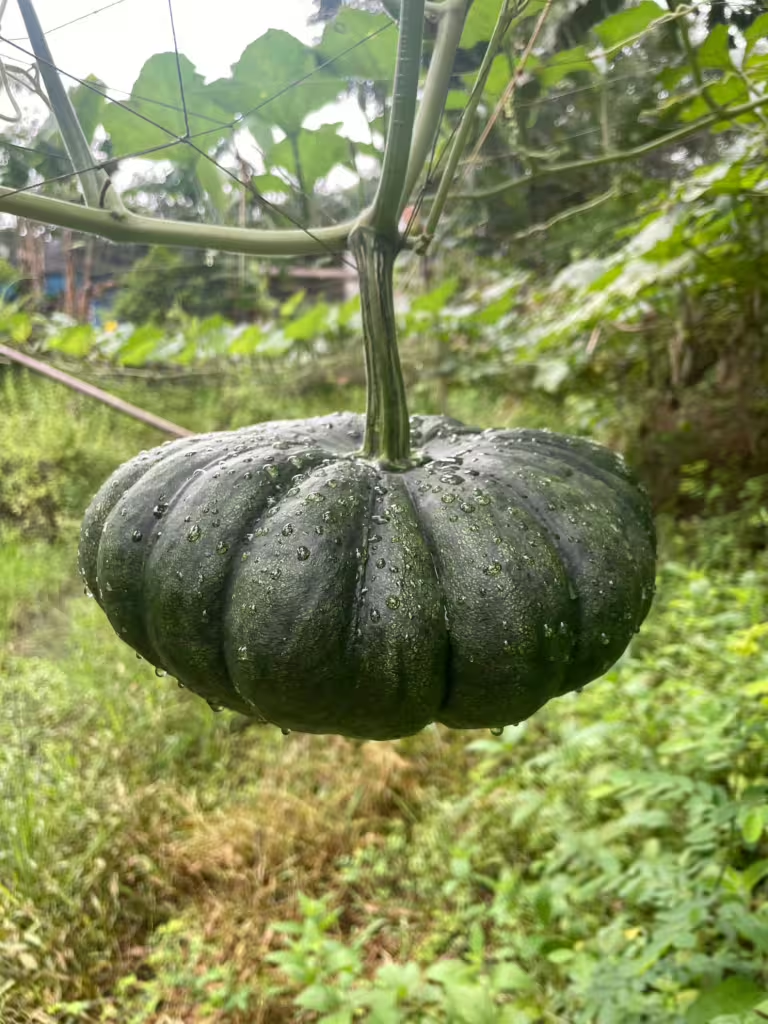
I love the taste of pumpkins, so growing them in the garden is a must for me. What makes them even better is that the small varieties are great for growing in vertical gardens. We’ve written a complete guide to vertical pumpkin farming here if you’re interested in learning more.
9. Winter Squash
Winter squash is a staple in any good English country garden, offering both beauty and sustenance as the weather gets colder. I particularly enjoy varieties such ‘Honeynut’ and ‘Spaghetti Squash’, which thrive in vertical gardens when trained up a sturdy trellis. Their vines naturally lend themselves to vertical growth, and the sight of these squash dangling from a height is a great thing to see in the garden.
To get the best out of winter squash, I’d recommend planting them in a very sunny spot and regularly tying the vines to a trellis as they grow to keep them well supported as the fruits can become quite heavy. Like the pumpkins, as the fruits develop, Id recommend using a sling or netting to support them to prevent the vines from snapping.
10. Passion Fruit
Passion fruit vines are one of the most rewarding plants to grow vertically, thanks to their quick growth and beautiful flowers making them a great plant to look at and eat. This growth allows them to quickly cover a trellis or pergola, adding a really full feel to any garden, making them a must if you’re starting out your vertical garden this year.
11. Peas
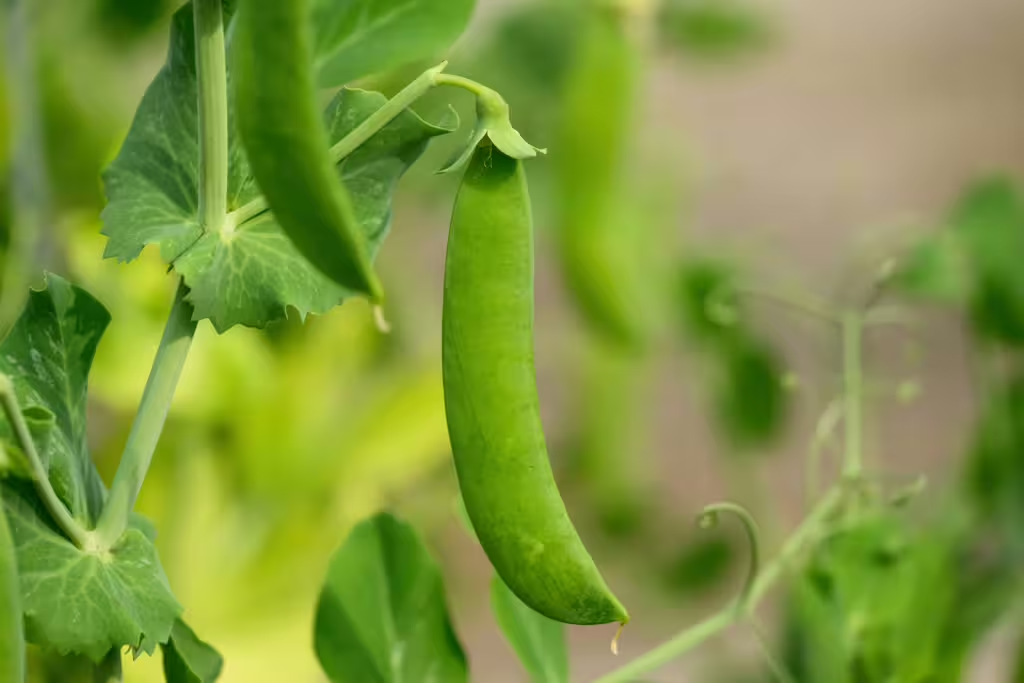
Peas are a delightful addition to any garden both for their look and sweet taste when you harvest them. Their climbing habit makes them great for vertical gardens, allowing you to make the most of any spare garden space that you have.
To maximise your pea harvest, I’d recommend planting them in well-drained soil, giving them plenty of support as they climb. I usually start my peas early in the season, planting them in partial shade to prevent them from getting scorched in the summer sun.
12. Blueberries

Who could miss out on blueberries as a favourite fruit to grow in a vertical garden? Blueberry bushes are resilient little plants, capable of growing just about anywhere, which makes them perfect for container or vertical gardening. All you need to do is plant them in acidic, well-draining soil and plant them in a sunny spot – easy!
Conclusion
By incorporating these fruits and vegetables into your vertical garden, you can enjoy fresh, home-grown produce even in the smallest of spaces. So what are you waiting for, let’s get growing!
If you’re looking for more help getting started with your vertical garden, take a look at our complete guide to creating a vertical gardening bed, or have a read of our tips for creating a vertical garden on your fence.

